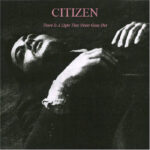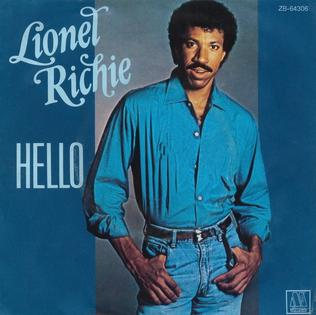 There are songs that make you dance, songs that make you think, and then there are songs that quietly ruin you — in the best possible way. The Smiths’ “There Is a Light That Never Goes Out” belongs to that last category. It’s one of those rare tracks that captures the bittersweet essence of youth, loneliness, love, and death all at once. It’s both romantic and tragic, fragile and defiant — the kind of song that can make you cry on a crowded bus and still feel like you’re the only person alive.
There are songs that make you dance, songs that make you think, and then there are songs that quietly ruin you — in the best possible way. The Smiths’ “There Is a Light That Never Goes Out” belongs to that last category. It’s one of those rare tracks that captures the bittersweet essence of youth, loneliness, love, and death all at once. It’s both romantic and tragic, fragile and defiant — the kind of song that can make you cry on a crowded bus and still feel like you’re the only person alive.
Released in 1986 on The Queen Is Dead, “There Is a Light That Never Goes Out” has since become The Smiths’ defining anthem — a melancholic love letter to outsiders, dreamers, and hopeless romantics. It’s not their biggest hit on paper, but it’s the one that has come to symbolize everything the band stood for: beauty in despair, poetry in misery, and humor in heartbreak.
A Sound That Glows in the Dark
The first thing that hits you about “There Is a Light That Never Goes Out” isn’t the lyrics — it’s that shimmering, tender soundscape Johnny Marr creates with his guitar and the subtle string arrangement. Marr was only in his early 20s when he composed it, but he had already developed a knack for crafting melodies that sound timeless, almost inevitable, like they were waiting to be discovered.
The song opens with a wistful arpeggio and builds around a simple chord progression that feels almost too fragile to hold the weight of what’s coming. The instrumentation — guitar, strings, and a faint, sighing rhythm — gives the track an almost cinematic feel, as if it could soundtrack a slow-motion car ride through rainy streets at 2 a.m.
Marr has said the melody was partly inspired by The Rolling Stones’ “I Want to Be Loved” and the cinematic sweep of film scores by Ennio Morricone. You can hear that cinematic ambition in every note — the song feels like it’s unfolding in widescreen, filled with both heartbreak and grandeur.
Then Morrissey’s voice enters, instantly grounding it. His delivery is equal parts yearning and deadpan, teetering between sincerity and irony. That contrast — Marr’s musical romanticism against Morrissey’s emotional detachment — is exactly what made The Smiths’ magic so potent.
The Ultimate Misfit Love Song
At its core, “There Is a Light That Never Goes Out” is a love song — but not in any conventional sense. It’s a song about wanting to escape, to feel alive, to find connection even if it leads to destruction. Morrissey’s lyrics are simultaneously melodramatic and deeply sincere, transforming a car crash fantasy into one of the most haunting metaphors for devotion ever written.
“Take me out tonight / Where there’s music and there’s people / Who are young and alive.”
From the opening line, it’s not about romance in the Hollywood sense. It’s about wanting to be part of something — to be seen, to feel real. The narrator isn’t declaring love in flowery terms; he’s begging for escape from loneliness, from the dull ache of everyday life.
And then comes the line that defines the song — maybe even defines The Smiths themselves:
“And if a double-decker bus crashes into us / To die by your side is such a heavenly way to die.”
It’s both absurd and devastatingly beautiful. Only Morrissey could make death sound like a date-night fantasy. There’s humor in it — a tongue-in-cheek melodrama — but there’s also raw emotion. The narrator would rather die than go home alone. The morbid romanticism isn’t about death at all, really. It’s about finding something, anything, worth dying for.
And that final refrain — “There is a light that never goes out” — turns the whole thing from tragedy into transcendence. The “light” could be love, could be hope, could be art itself. Whatever it is, it’s eternal. Even in the darkest night, there’s something that refuses to fade.
Morrissey’s Poetic Despair
Morrissey’s lyrics on The Queen Is Dead are some of his finest — biting, witty, deeply English — but “There Is a Light That Never Goes Out” is him at his most vulnerable. He channels the universal ache of adolescence: the feeling of being misunderstood, the longing to escape a world that doesn’t understand you, the fantasy that love might save you even if it destroys you in the process.
His voice, too, is at its emotional peak. He doesn’t oversing; he barely raises his tone above a sigh. There’s a trembling restraint in his performance, as if he’s confessing something he’s embarrassed to admit. You can hear the ghosts of ’50s crooners like Elvis and Gene Pitney in his phrasing, but there’s also a punk sincerity — a refusal to sugarcoat the pain.
What makes Morrissey’s delivery so unforgettable is that it walks the line between irony and heartbreak so perfectly. You can’t tell if he’s mocking the sentimentality of the lyrics or surrendering to it completely. That ambiguity is what makes the song feel alive — you can project whatever version of emotion you’re feeling onto it.
Johnny Marr’s Masterpiece
If Morrissey is the song’s soul, Johnny Marr is its heartbeat. His arrangement on “There Is a Light That Never Goes Out” is among his greatest achievements as a guitarist and composer. The jangle of his guitar feels both nostalgic and forward-thinking — echoing ’60s pop while pushing toward the lush indie textures that would define the next two decades.
Marr’s brilliance lies in his ability to make a song feel complex while sounding effortless. There’s no solo, no showboating, just layers of melody that interlock like stained glass. The strings, arranged by Marr himself, lift the song into cinematic territory without ever overwhelming it. They hover around Morrissey’s voice like a halo, giving weight to every line.
He once described the song as his attempt to write “a perfect pop record with an emotional pull.” Mission accomplished. The beauty of “There Is a Light That Never Goes Out” is that you could strip away the vocals entirely and still feel every ounce of longing and nostalgia through Marr’s arrangement alone.
The Queen Is Dead and The Smiths’ Crowning Moment
The Queen Is Dead is widely considered The Smiths’ best album — and for good reason. It’s the moment where every element of the band clicked. Marr’s melodies had never been stronger, Morrissey’s lyrics were both playful and profound, and the rhythm section of Andy Rourke and Mike Joyce gave everything a propulsive undercurrent.
But “There Is a Light That Never Goes Out” stands apart. It’s the emotional centerpiece — the heart beating inside an album that otherwise oscillates between political satire and personal melancholy. Amid the cynicism and humor of songs like “Bigmouth Strikes Again” and “The Queen Is Dead,” this track feels pure, unguarded, and eternal.
It’s also one of those rare songs that transcends its era. So many ’80s tracks are shackled to their production values — gated drums, dated synths, heavy reverb. But “There Is a Light That Never Goes Out” sounds timeless. You could release it today, unchanged, and it would still cut through modern playlists like a blade.
The Light That Never Went Out
Over the decades, “There Is a Light That Never Goes Out” has grown from a cult favorite to an immortal anthem. It’s been covered by countless artists — from Noel Gallagher to The Killers — but no one can quite replicate the delicate alchemy of the original. Each cover only reinforces how untouchable The Smiths’ version is.
For many fans, this is the Smiths song. It’s the track that plays at weddings and funerals, at last dances and lonely car rides. It’s the soundtrack to unrequited love, to heartbreak that’s almost comforting in its familiarity. Its emotional honesty has made it an anthem for generations of outsiders who felt too shy, too strange, or too sensitive for the world.
There’s something defiant in the song’s sadness. It’s not wallowing; it’s celebrating the fact that we can feel so deeply. When Morrissey sings about dying by someone’s side, it’s not a death wish — it’s a declaration that life only has meaning through connection. That’s the “light” that never goes out. It’s the flicker of hope that keeps us human.
Why It Still Hurts (and Heals)
Part of what makes “There Is a Light That Never Goes Out” so enduring is that it hits differently depending on where you are in life. As a teenager, it feels like the soundtrack to your most dramatic fantasies — sneaking out, running away, falling in love with someone who doesn’t know your name. In adulthood, it becomes something deeper: a memory of who you were, a relic of youthful intensity that still tugs at the heart.
It’s also one of those rare songs that make sadness feel beautiful. The Smiths had a knack for romanticizing misery without glamorizing it. They didn’t tell you that heartbreak was noble; they told you it was real, and that surviving it made you who you are. “There Is a Light That Never Goes Out” captures that perfectly — it’s both an elegy and a hymn.
Even the title itself has taken on almost spiritual meaning over time. The “light” could be love, hope, art, memory — whatever keeps you going when everything else feels dark. And the beauty of it is that it doesn’t tell you what that light is. It lets you decide.
Legacy of an Eternal Flame
Today, “There Is a Light That Never Goes Out” is more than just a song — it’s a piece of cultural DNA. It’s been used in films like (500) Days of Summer and The Perks of Being a Wallflower, where it instantly evokes intimacy, melancholy, and yearning. It’s the shorthand for “that feeling” — the one you can’t quite name but instantly recognize.
The Smiths disbanded just a year after its release, leaving behind only a handful of albums. But if their career had ended with this song alone, their legacy would still be secure. It encapsulates everything they represented: poetic gloom, melodic brilliance, and emotional honesty.
It’s hard to think of another band that made sadness feel so comforting. In The Smiths’ universe, misery wasn’t something to be ashamed of — it was proof that you were alive. And “There Is a Light That Never Goes Out” remains the purest distillation of that worldview: a sad song that glows like a lantern in the fog.
Final Thoughts
Decades later, “There Is a Light That Never Goes Out” still feels like an emotional gut punch — the kind of song that can stop you mid-conversation, mid-commute, mid-life. It’s tender, tragic, and oddly uplifting. Johnny Marr’s shimmering arrangement feels like the stars above a midnight escape, while Morrissey’s voice sounds like the ache in your chest that words can’t quite reach.
It’s a love song for people who never quite fit in, a prayer for connection in a world that often feels cold and distant. And even as time passes and trends fade, that central idea — that the light of love, hope, and human connection never truly goes out — still burns.
The Smiths may have left us long ago, but this song remains eternal. It flickers quietly in bedrooms, headphones, and memories everywhere. The light, as promised, never went out.


